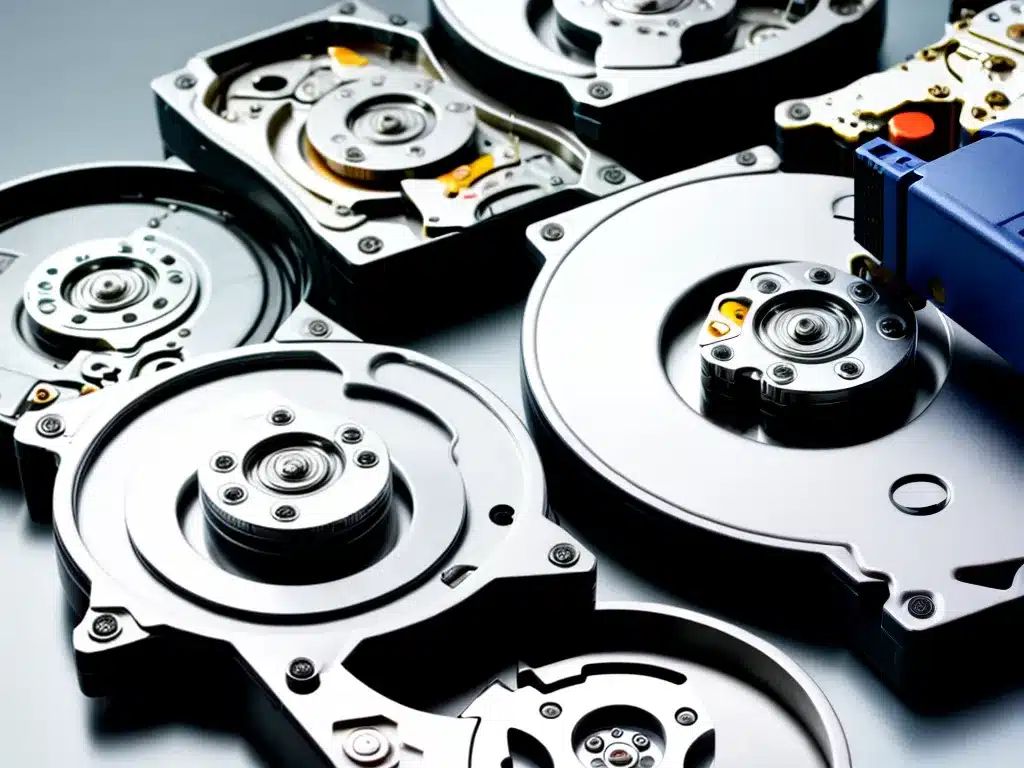
Introduction
As someone who loves to tinker with old computers and salvage parts, I often find myself trying to recover data from old hard drives taken out of dead or dying computers. While getting data off modern hard drives is usually straightforward, dealing with vintage drives brings its own set of challenges. In this guide, I’ll share the methods and tools I’ve found useful for recovering data from old and damaged hard drives over the years.
Challenges with Old Hard Drives
There are several factors that can make getting data off old hard drives difficult:
Obsolete Interfaces
Older hard drives used interfaces that are no longer common, like IDE, SCSI, or ESDI. This means you need adapters or cables to connect them to modern computers. IDE to USB and SCSI to USB adapters are helpful.
Mechanical Failure
On old drives, the motor or heads often fail. If the plates don’t spin up, the drive is dead. However, sometimes you can revive them temporarily by freezing or tapping the drive.
Degraded Magnetic Media
Over many years, even stored properly, the magnetic media on a hard drive platter can start to degrade, making data recovery difficult.
Outdated File Systems
Old drives may use file systems like FAT16 or HFS that modern operating systems no longer support by default. This requires OS tweaks or data recovery tools to access.
Encryption and Protections
Vintage drives may have old proprietary software or hardware protections that prevent easy data access. These include custom partitioning schemes, DRM, or physical lock-outs.
Methods for Accessing Old Hard Drives
Despite the challenges, with the right tools and techniques you can often recover data from old drives:
Using Original Hardware
If you have the original computer, your best bet is to install the drive in it and copy needed files over a period before it dies completely. This avoids compatibility issues.
Adapters
Adapters like IDE/SATA to USB allow attaching drives to modern computers. Match the drive’s interface to the proper adapter. Quality matters, as cheap ones can damage drives.
Drive Enclosures
An external drive enclosure with power supply and interface built in is a tidy, reusable way to access old drives. I like USB enclosures with interchangeable interfaces.
Drives with Interchangeable Bays
Drives like the Iomega Zip or SyQuest had removable disk bays. You can eject the bay and insert it into another working drive to recover data. Very handy!
Boot Disks
Boot floppies or CDs with support for obsolete file systems and hardware let you temporarily boot old operating systems to copy data off drives. FreeDOS works well for vintage Windows drives.
Software Recovery Tools
If the drive electronics have failed, specialized software can help extract raw data from the platters:
-
SpinRite can repair drives with bad sectors and recover data. It runs outside your normal OS.
-
Photorec ignores the file system entirely, scanning the raw platter for recognizable file signatures. Great for critically damaged drives.
-
DMDE can interface with very old file systems like FAT12/16 and HPFS. The free trial lets you preview recovered files.
Dealing with Physical Damage
For drives with serious physical damage like failed motors or heads, more drastic measures may work:
-
You can freeze drives overnight to shrink platters enough for the heads to touch. Then quickly connect and copy data before it warms up.
-
With the cover off, you can try replacing the drive motor or heads, if the electronics aren’t fried. This requires very specialist skills.
-
As a last resort, removing the platters to read them in specialized recovery hardware is possible. Again, this is for the advanced tinkerer only.
When All Else Fails…
If you absolutely must have data off a damaged beyond repair drive, there are data recovery services that can attempt to extract data. However, this can cost thousands of dollars and isn’t guaranteed. At some point you may need to accept the data is unrecoverable by conventional means.
Tips for Accessing Old Drives
Here are a few closing tips from my experience getting data off vintage hard drives:
-
Go slowly and be gentle to avoid further damage to degraded drives.
-
Keep drives cool and well ventilated during recovery attempts. Overheating kills drives.
-
Be prepared for corrupted data after decades of bit rot. Recovered files may not be pristine.
-
On the first signs of life, like spinning or appearing in your system, start copying data immediately. You may only get one brief shot!
-
Accept that really old drives from the 80s or 70s may be beyond recovery with today’s tools. The technology has limits.
Conclusion
Recovering data from decades old hard drives requires patience and specialized tools. With some persistence and know-how though, you can often rescue important documents and photos. Just be ready for frustrating challenges and accept not everything can be saved. Accept defeat graciously, and the small victories along the way will feel all the sweeter.












